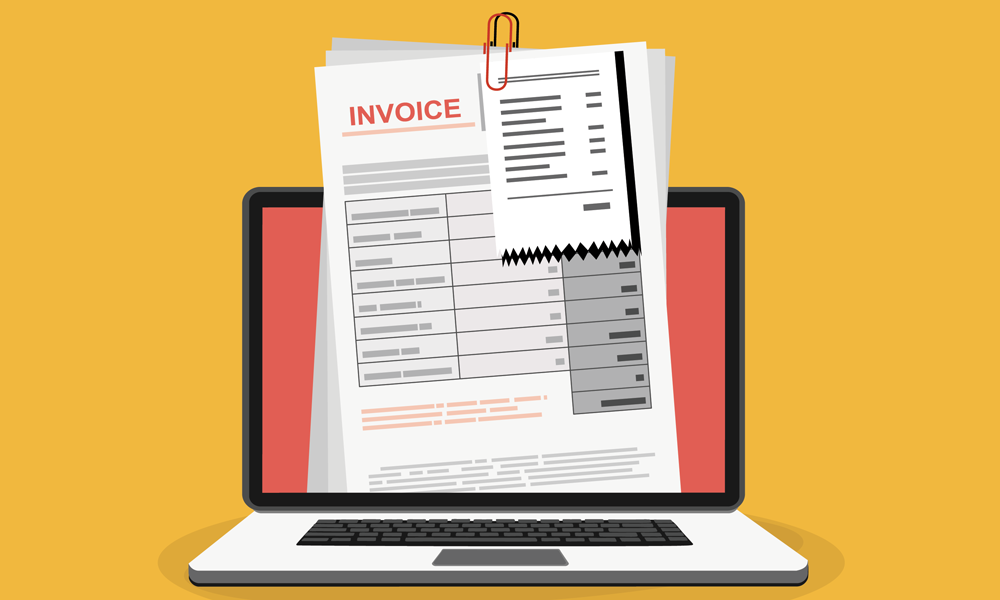What is a Proforma Invoice?
Back to all Small Business guides

Timely and accurate invoicing is an essential part of running any small business. But did you know that there are actually different types of invoices, each of which has its own role to play in helping you manage your company's finances?
Types of invoices
As mentioned, there are several different invoice types. The most commonly recognised is the sales invoice. This is a formal request for payment that's sent at the same time as, or shortly after, goods or services are supplied. As well as a payment request, it's also a tax document and, if it includes VAT, it may be called a tax invoice.
If you're shipping goods internationally, you may issue commercial invoices, which are used to calculate the traded goods' financial value and any applicable taxes that may apply to the shipment.
If goods are damaged, or there's been a mistake with an order, you may also issue a credit note or credit invoice to cancel out an already issued invoice, in part or in full.
What is a Proforma Invoice?
A proforma invoice is essentially a provisional bill of sale. It is usually sent when a customer has committed to a purchase but before the final details, such as quantity or price, have been confirmed.
A proforma invoice will include many of the exact details as a standard invoice, such as a description of the goods or services involved, the total payable amount and other information about the transaction. However, it does not carry the same legal weight and should not be used for accounting purposes or binding agreements.
In fact, in many ways, a proforma invoice is more like a quote or estimate than an invoice. Whereas with a standard invoice, the customer must pay the stated amount, this isn't the case with a proforma. In addition, the total amount due isn't recorded under the customer's accounts payable or your accounts receivable, and you can't use a proforma to reclaim VAT. Once the goods or services are delivered, you can send a standard sales invoice for these purposes.
In essence, a proforma invoice is used to show how much goods or services will cost to help the customer decide if they want to go ahead with the purchase. Once the customer confirms they'd like to go ahead, you can issue a final invoice. However, if they decide not to proceed, no action is required, and the proforma invoice does not need to be edited or cancelled.
When to Send a Proforma Invoice
So, if it's not legally binding, what is the purpose of a proforma invoice, and why would you use one? A proforma invoice serves as a good faith agreement between you and your customer. It provides a breakdown of the goods or services in question along with an accurate indication of the total amount due - but you are not requesting payment, so these details can be adjusted at a later date if necessary.
Proforma invoices can also streamline the sales process as everything is confirmed upfront. Your customer is transparent on what they are purchasing, and you can then supply the goods or services as agreed.
Since they often include details about shipping, packaging, weight and delivery fees, proforma invoices are also often used in the international shipping industry, helping to declare the value of an item so that it can pass through customs. Some companies also request proforma invoices for their internal purchasing approval process.
Proforma Invoice vs Quotation
A proforma invoice and a quotation may seem similar, providing information about a sale that isn't legally binding. However, they do differ in terms of the purpose they serve. A quotation is usually sent to a potential customer interested in the products or services you offer. This is generally done at an early stage in the relationship, and the potential customer is under no obligation to take any further action when they have received the quotation.
However, a proforma invoice is considered more binding than a quotation and is usually issued at a more advanced stage in the sales process. It provides more detail than a quotation, although there remains room for negotiation on aspects like price.
What to Include on a Proforma Invoice?
There are no specific rules regarding what should be included on a proforma invoice, but all financial documents should clearly state all the information that the customer may need to know. It's also a good idea to keep the layout and format close to that of your standard invoices.
Key information to include would be the date of issue, contact details for you and the customer, details of the goods or services to be delivered, including price, VAT and other applicable taxes, delivery costs, and the total amount due.
In addition, be sure to clearly label the document 'proforma' so the customer is clear on what the document is. Other information such as an invoice number, payment date and date of delivery are not relevant here.